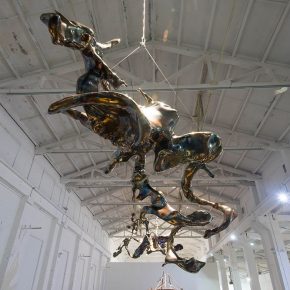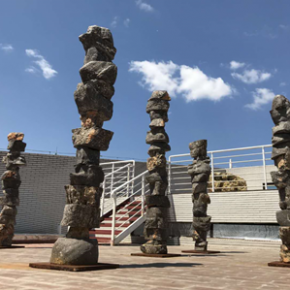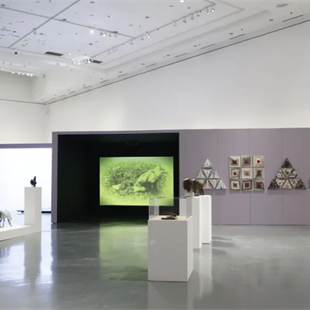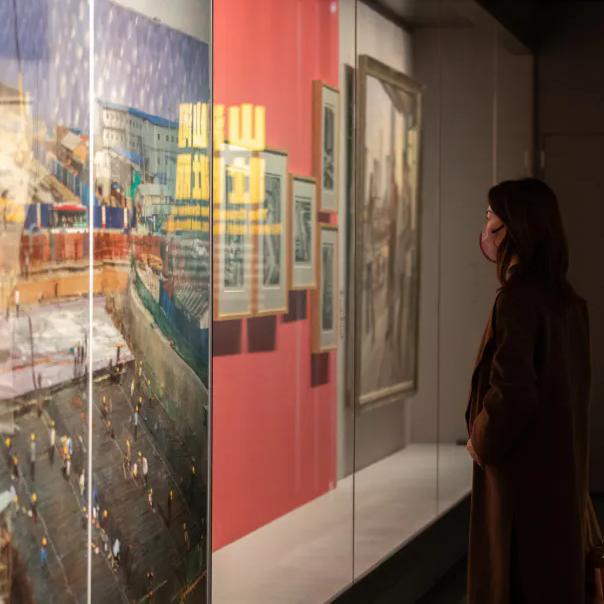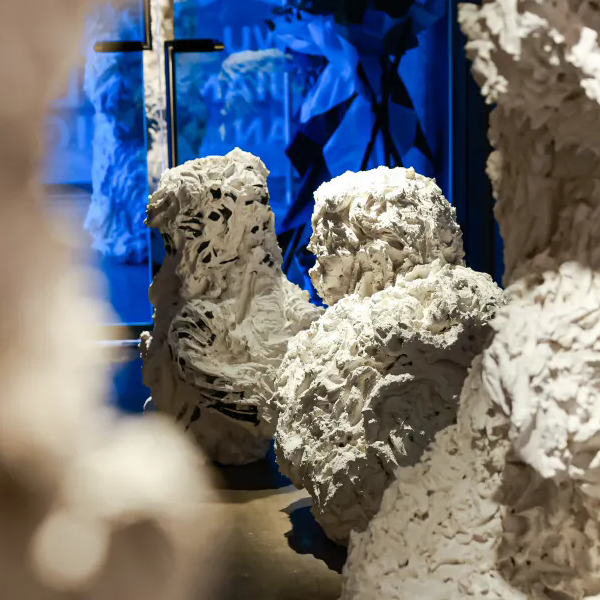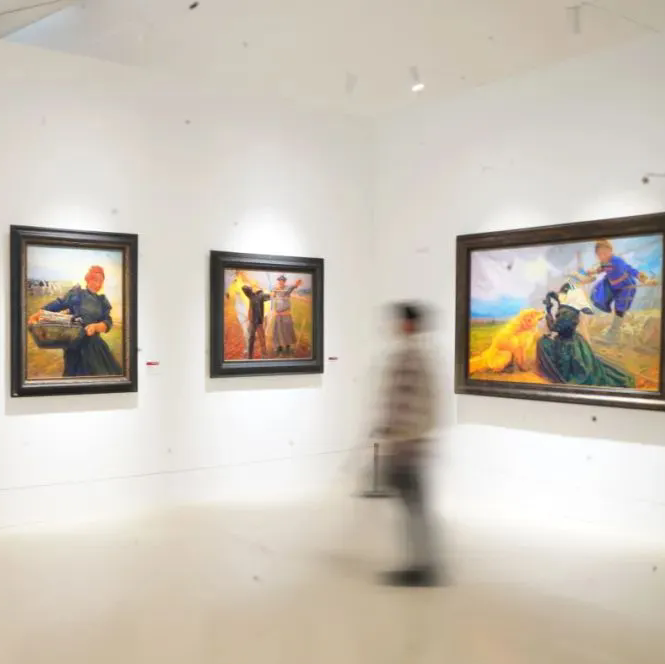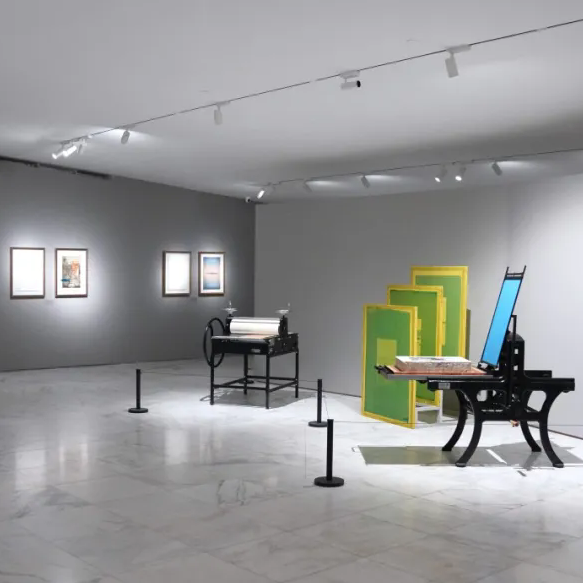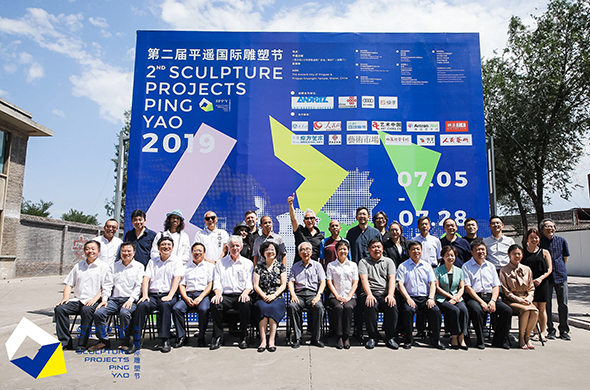
After getting off at Pingyao Railway Station and going directly to the scenic spot of Pingyao, you will find two silver sculptures with modern features at the entrance, which are illuminating by the sunshine. Tourists who want to visit the ancient town are attracted to these sculptures. These two works are sculptures of stainless steel by artists Chen Zhiguang and Ren Zhe. Whether due to the moulding of these works or the selection of materials, they are in sharp contrast with the gray brick buildings of the ancient town. This is the first impression that the 2nd Sculpture Projects Pingyao 2019 brings to us. Introduced by them, a dialogue between tradition and modernity has been ushered in.
I. The Historic Dialogue between Sculptures and the Ancient Town
In the early 1980s, in order to meet the needs of urban construction, various localities began to build large-scale constructions and many ancient towns and villages were demolished, so eventually they were completely unrecognizable. According to the overall urban planning of Pingyao County at that time, the ancient town should have been demolished into a new commercial building. Fortunately, the dismantling event received the attention of professionals and they called for a cessation of the work. Finally, with the support of the National Committee of the Chinese People's Political Consultative Conference and the Ministry of Culture, the ancient town was repaired and protected. In the 1990s, in order to promote the protection of the ancient town, Pingyao County began to develop their tourism industry. Since then, it worked towards being declared as a world cultural heritage. In December 1997, one town with two temples (Pingyao Ancient Town together with the surrounding Shuanglin Temple and Zhenguo Temple) successfully entered the World Cultural Heritage List. This ancient town with more than 2,800 years of history has been truly preserved. After subsequent developments, it has even become a sample of the protection of ancient towns, and it was also praised as “the most complete ancient town in China.”
An ancient town needs to be protected, as the epoch develops, the question is how does traditional culture integrate into modern civilization? On the one hand, the ancient building maintenance of the ancient town emphasizes the old outlook and a new core, it will retain the original style of Pingyao, and also permit the interior design of the buildings to ensure the convenience of people's lives as much as possible. On the other hand, in order to further develop the culture of the ancient town and activate the cultural heritage, Pingyao focuses on the development of cultural brands. Many cultural events have been held in Pingyao such as the Pingyao International Photography Exhibition (2001); the Spring Festival Folk Culture Brand “I celebrate the Spring Festival in Pingyao” (2006); the large indoor drama experience “Meeting Pingyao Again” (2012, Pingyao County cooperated with the Impression Team led by Director Wang Chaoge); the First Pingyao International Film Exhibition (2017, Pingyao County cooperated with the team led by Director Jia Zhangke). According to the official website of the People’s Government of Pingyao County, during the Dragon Boat Festival in 2019, the ancient town of Pingyao was visited by 115,200 tourists; in 2018, the number of tourists who visited Pingyao County reached 15,4867 million. Obviously, today’s Pingyao has been successfully promoted as a strong tourist town, and domestic and foreign tourists have come to visit and inject vitality into Pingyao.
Based on its own historical and cultural characteristics, in 2018, the Pingyao County Government teamed up with the Mobius Art Foundation to launch the 1st Sculpture Projects Pingyao. There are many ancient buildings in Shanxi. Among them, the ancient buildings from the Yuan Dynasty and before the Yuan Dynasty have accounted for nearly 80% of them in the country. The temple architecture also occupied the bulk of them, and the colorful sculptures that remain in the temples are the treasures. According to statistics, there are more than 50,000 precious folk sculptures scattered in Pingyao urban and rural areas, including brick carvings, wood carvings and stone carvings. Pingyao can be taken as a natural “sculpture art paradise.” Similar to the problems faced by the ancient town of Pingyao, these traditional sculptures that were scattered everywhere are activated in the context of modern sculpture art, which is an ancient and modern issue, and an irresistible topic of tradition and modernity. In 2018, the 1st Sculpture Projects Pingyao, with the theme of “Carving Ancient and Modern”, invited internationally acclaimed curator Lorenzo Benedetti (Curator of the National Pavilion of the Netherlands for the 55th Venice Biennale) to curate one specially invited exhibition and two parallel exhibitions on the themes of “international dialogue”, “Chinese freehand spirit”. It brings together over 100 works by about 70 artists from nearly 20 countries. It is based on traditional sculptures and it is jointly presented with various artistic expressions such as installation, earth art, digital art and new media. Even the entire Pingyao town was introduced to a different kind of scenery.
In July 2019, the 2nd Sculpture Projects Pingyao 2019 was unveiled as scheduled, inviting Ulrich Loock (former Director of Art Museums in Bern and Luzern) and Peng Feng , President of the School of Art, Peking University, Curator of the China Pavilion for the 54th Venice Biennale who both served as the chief curator of the 2nd Sculpture Projects Pingyao 2019. Jin Shangyi, Honorary Chairman of the Chinese Artists Association, Shao Dazhen, a well-known art critic, and GOLLIGNON, a member of the French Academy of Culture and Communication, served as general counsel of the 2nd Sculpture Projects Pingyao 2019. In an exclusive interview by the press, Mr. Jin Shangyi said that culture is the field that is in most need of innovation. By holding the 2nd Sculpture Projects Pingyao, the developments in the cultural tourism industry can be better promoted. There are many works with contemporary elements that have been included in this exhibition, and they are integrated with the ancient town, which have triggered good chemical reactions so that this activity makes great sense.
The 2nd Sculpture Projects Pingyao 2019, with the theme of “Inbetween”, Chinese curator Peng Feng believed that this “Inbetween” was not only reflected in the works they exhibited, but also existed in the ancient town of Pingyao. He hopes that the 2nd Sculpture Projects Pingyao 2019 will bring together sculptors from different countries to the center of Pingyao. Between all the ‘past’ and ‘future’, between ‘here’ and ‘there’, there will be a variety of interpretations. The connections between the relationships come together. Let the art create a historic dialogue among us, the ancient city, and the world, and hopefully that the 2nd Sculpture Projects Pingyao 2019 can reshape the historical significance of Pingyao.
II. A Representation of the “Inbetween” State
In the past, sculptures were placed in temples, churches and mausoleums. The sense of ritual and functionality was extremely strong, and believers and followers were the largest audience. It can be said that sculpture was originally public art, but this publicity was limited to specific occasions. The sculptures since the founding of People’s Republic of China are also highly functional, and largely retain the morphological features and thematic features of traditional sculptures. After the reform and opening up, the literary and artistic environment began to relax, and with the introduction of foreign sculptures, the traditional sculpture language began to be enriched and expanded by modernist abstraction, transformation and other artistic languages, while developing into a diversified artistic outlook and inviting the public to participate in the re-construction of its meaning.
The 2nd Sculpture Projects Pingyao 2019 included more than 600 sculptures from various countries as well as China. Their languages are both traditional and contemporary while their expressive techniques are either biased towards materials, or rely on technology, or focus on sculpture techniques, or focus on conceptual expressions, these works are displayed in the ancient town, or in the transformation of the diesel factory in the ancient town, or placed on the side of the noisy sidewalk, they participate in a rich variety of communication among sculptures.
Guo Gong’s work “Qie-Wen–Stainless Steel C-2 and C-3” displayed at the entrance of renovation space in the diesel plant is a typical work expressed by materials. The artist pays attention to the spiritual attributes of stainless steel and makes a linguistic exploration in stainless steel from the existence and essential relationship of material origin. Guo Gong believes that when people regard stainless steel as a material that mirrors, the properties of material are hidden, but the other is presented. In fact, for stainless steel, the mirror image can be reflected both inside and outside the material, but people see the outside, thus he presents the interior of the stainless steel and the artists turns to be a translator and spokesman of stainless steel.
Zhang Yanzi’s work “Breathable” still continues the theme she has been paying attention to: thinking on life at present. In modern society, food safety, air quality and many other issues have brought about pressure on human survival. How individuals can fight and compromise, and finally live comfortably? Borrowing the concept of “breathing”, the artist chose medical gauze as a medium, and the rolls of gauze were arranged in an acrylic container, unexpectedly expressing a feeling of depression. In this case, the gauze as a material loses its meaning. The beautiful landscape that was originally drawn on the gauze is ignored by the viewer and projected into real life. This is also a kind of oppressive living environment that we face.
Sui Jianguo’s work “Planting Trace15#, 16#, 17#” is a work combined with 3D printing technology. When the artist kneaded the plaster, the pieces were squeezed out from the cracks in the fingers. The artist discovered the splendour of these fragments under a magnifying glass, thus he scanned them and then exported them with 3D printing technology. This technique broke the limitation of detail reduction in the process of magnifying the mud, which made the surface texture of the sculpture work unprecedentedly detailed. Wu Daxin’s work “Seven-Storeyed Pagoda” was inspired by the top of the towers of two ancient stone towers in Quanzhou. For the Quanzhou locals, the two ancient towers represent both the sacred structure and the secular function. They are both religious buildings and a beacon for sailors to navigate the port. At the exhibition space, the motor started to drive more than 500 stainless steel gears to rotate together to create a dynamic floating scene. The exposed machinery is displayed in a space transformed from the past diesel engine factory, and it seems to imply a life-winding rotation.
The work of the Chao’s brothers “Oriental Red” is vivid and realistic. The front of the car is originally made of steel, but they use the fragile material of ceramic to dispel the steel itself and bring the temperature of the memory to an “old object.” Jia Zhuofei used a traditional sculpture technique to create a group of statues of Liu Zhidan, Xie Zichang, and Xi Zhongxun, he named it “Red Zhaojin.” In the 1930s, Liu Zhidan, Xie Zichang, Xi Zhongxun and other older generation proletarian revolutionaries at the southern end of the Qiaoshan Mountains at the junction of Shaanxi and Gansu, Zhaojin, created the first mountainous revolutionary base in the northwest, the Shaanxi-Gansu revolutionary base. This has become the cradle of the Northwest Revolution and has also created the great “Nanliang Spirit.”
Jaume Plensa’s work, “Endless”, is made of stainless steel and creates a figure that tucks his knees in. The hollowed-out characters are welded with languages of different countries. We cannot find regular patterns from these words but they are brought together in the artist’s work into a conformity that constitutes a united form. We come from different places, speak different languages, and gather into human history in the collision of each other. Tian He’s work “Water” is an abstract sculpture, and the seemingly lack of artificial sculpture skills carries more individualistic thinking. The artist intercepts the naturally flowing water that is artificially cut into cubes of various sizes and proportions, which implies that in daily life, people rely on self-will to claim everything. The artist hopes that the viewer will see the sky, nature and self in the stainless steel cutting mirror of the work, and realize that we are also a part of nature, so as to protect the natural environment.
Wang Kaifang’s new work “Besieged Gold Brick City” is a bright and dazzling space composed of five gold bricks. The audience walks through it and takes selfies at various angles to interact with it. In this space, both entertainment and danger are combined. Like the space where we live, the city, nature and people are divided into pieces and mixed together. We are decorated in the golden space and we make ourselves beautiful, but in real life, joyful people feel gradually lost and re-explore the direction. “Besieged Gold Brick City” has become a reflection of our real life. People outside the city want to come in, and people in the city want to go out.
Actually, the above classification of works is often inclined to be a subjective opinion, because it is not difficult for us to find artists who pay attention to material expression, who also create conceptual expressions, such as Zhi Min’s work “Four Gods of Celestial Phenomena—White Tiger” and Qiang Yong’s work “Filaments” and so on. This is also why the exhibition is not presented in a classified way. Peng Feng frankly said in an exclusive interview with CAFA ART INFO. The purpose of such a curative style is precisely the appearance of an “inbetween” state. “Inbetween” is a unique idea in Chinese philosophy and aesthetics. It is reflected in different degrees in philosophical thoughts such as Confucianism, Taoism, Buddhism, and other art theories such as poetry, music, and painting. “The beauty of painting is between the likeness and the unlikeness” which has become the famous saying of Chinese aesthetics. Regrettably, in the modern transformation process of Chinese academic language, “inbetween”, like many other important concepts, has not continued, and the rich and profound thoughts related to “inbetween” have gradually been forgotten.
“Inbetween” is not just reflected “between” the tradition and the modernity, but it also reflected between the East and the West. The sculpture projects invite sculptors from all over the world to participate in the exhibition, and it is curated by European and Chinese curators, intended to reflect the artistic and academic dialogue between the East and the West. Hereby it is necessary to propose that the 2nd Sculpture Projects Pingyao 2019 will include the “International Youth Sculpture Promotion Program” on the basis of the first session. Pingyao Shuanglin Temple is used as the exhibition venue for this session, which is known as the “treasure house of oriental colorful sculpture”. It will provide support to the growth of young sculptors and it will also strengthen the dialogue between tradition and modernity, the East and the West.
Text by Yang Zhonghui, translated and edited by Sue/CAFA ART INFO
Photo Courtesy of the Organizer
Artists:
Zhang Zhaoying, Luo Peng, Xia Yang, Wang Liwei, Heidi Voet, Oliver Herring, Jin Shi, Tian He, Li Mengyuan, Wang Yi, Xiang Yang. Gu Wenda, Ren Tianjin, Chen Zhiguang, Jon Isherwood, Xie Xiaoze, Jaume Plensa, Ren Hongwei, Wu Daxin, Wang Kaifang, Ren Zhe, Li Zi, Tian Xiaolei, Qiang Yong, Zheng Lu, Cang Xin, Qin Ga, Wu Didi, Wang Yinglu, Chen Xi, Guo Gong, Wang Huanqing, Zhang Yanzi, He Xiangyu, Gurjinder Kaur & Bharat Singh, Li Hongwei, Yue Minjun, Thomas Eller, Tony Brown, Zhi Min, Ouyang Sulong, Su Lingzhi, Shi Liren, Zhan Wang, Yang Qiong, Chao’s brothers, Chen Wenling, Li Tao, Li Zhen, Sui Jianguo, Jams Carl, Li He, Richard Deacon
Artists participating in the “International Youth Sculpture Promotion Program”
Zhao Qin, Wei Dong, Dou Fukun, Zheng Xiaohui, Qian Liang, Wang Jiang, Liu Xinwei, Su Lingzhi, Meng Xiangke, Wen Xichao



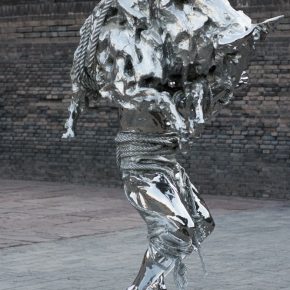
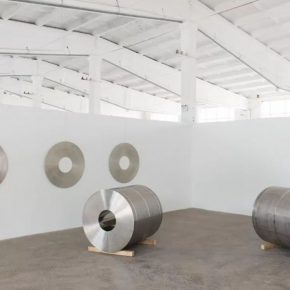
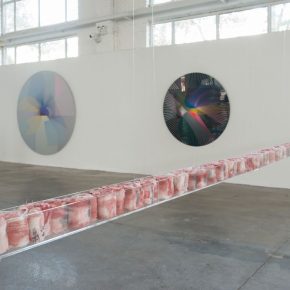

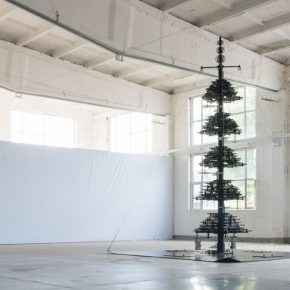
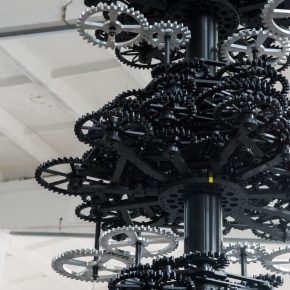
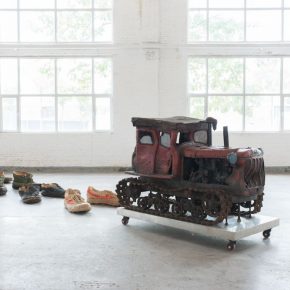
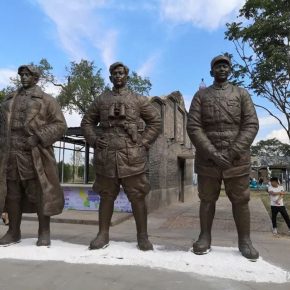
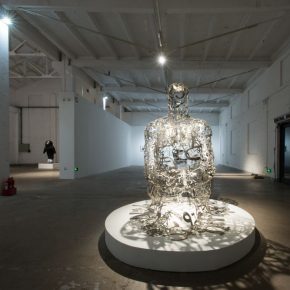

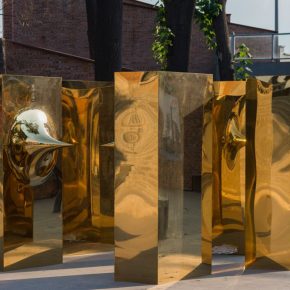

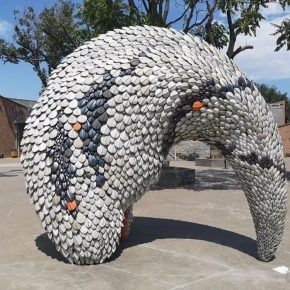
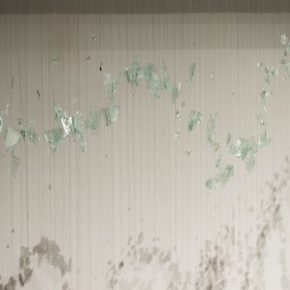

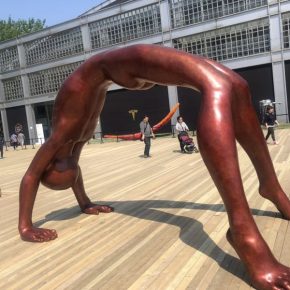

,2014-2015-290x290.png)

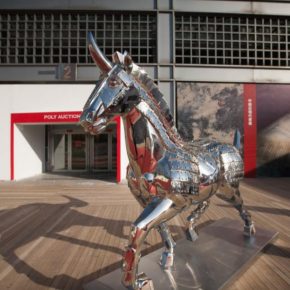
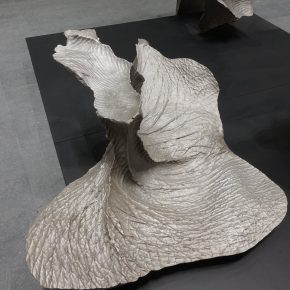
,2019-290x290.jpg)

